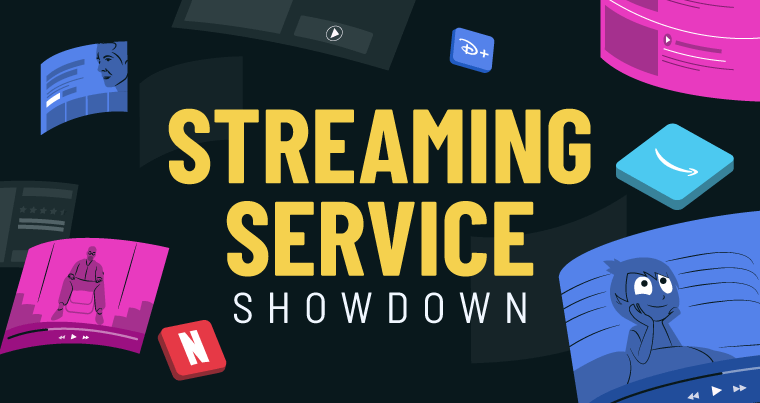Before applying for a personal line of credit, it’s important to understand how interest and repayments are going to work. Your budget and your credit score can be impacted by how much you owe — and interest can play a big part in the cost of your payments.
Let’s explore how interest on a line of credit works and the key factors that can determine the cost.
How Does Line of Credit Interest Work?
When you’re approved for a personal line of credit, your lender will issue you a credit limit that you can borrow up to, similarly to a credit card. Unlike a personal loan where you receive a lump sum of cash up front, with a line of credit you can draw the amount you need and you’ll pay interest on the amount of money you borrow. For example, if you receive a credit limit of $5,000 and take $1,000 during the draw period, interest will only be charged on the $1,000 that you borrowed.
Being able to decide how much you borrow is one benefit of a line of credit that makes it a very flexible type of loan. By watching how much you borrow from your line of credit, you can control the amount you get charged interest on. Plus, if you don’t borrow up to your full credit limit, you’ll still have available credit to access in case unexpected expenses pop up.
How Is Interest Calculated on a Line of Credit?
The way interest is calculated and charged may vary depending on the lender. (Check your lender’s FAQs to see how it’s charged.) In general, however, interest on a line of credit is calculated based on the balance you carry day-to-day. This means the more you borrow, and the longer you borrow it, the more interest you’ll pay.
Typically, the lender will take the annual interest rate and divide it by 365 to get the daily rate. Then, they’ll apply this rate to the balance that was carried each day. At the end of the payment period, they’ll add up the daily interest charges.
Here is a simple formula you can use to calculate your interest fee per billing period:
(Balance × Interest rate × Number of days in a billing period) / 365 = Interest fee
($1,000 x 100% x 14) / 365 = 38.35
How Do I Calculate My Line of Credit Payments?
Most lines of credit will have some type of minimum payment, which is usually a part of the principal plus interest and any fees, such as a maintenance fee or annual fee. To calculate your payments, you’ll need to know your loan terms, your outstanding balance, your interest rate and how much the fees are.
Start by looking at your loan terms and figuring out the minimum bi-weekly or monthly payment you need to make over your repayment period. This will often be a percentage of your outstanding balance. Then add the interest fees and any other associated fees.
How Do I Keep My Interest Expenses Low?
Borrow only what you need. Keep in mind that you’ll be charged interest on the amount you borrow from your line of credit. A line of credit can be used for many different purposes, and it can be tempting to draw more than you need to have some extra money in your bank account. But if you want to avoid unnecessary interest expenses you should only draw what you need. If you end up needing more funds for an unexpected expense in the future, you can draw more as long as you haven’t hit your credit limit.
Pay more than the minimum. Paying more than the minimum amount due can help you save on interest. By paying more than the minimum, you can reduce your principal balance faster. This can help you repay your debt faster and save on interest. Even a small amount above the minimum can compound over time and help you save.
Keep up with your payments. When it comes to repayment, keeping consistent is key. Interest is charged on your outstanding balance, and the longer you carry a balance the more interest you’ll accrue. Staying on top of your payments will help you reduce your principal balance which will help reduce your interest charges. Plus it will help you avoid any late fees.
Can I Get a Lower Interest Rate?
Getting a lower interest rate on your personal line of credit can make a big difference. Here are some ways you can try to get a lower interest rate.
Boost your creditworthiness. Many traditional lenders, like banks and credit unions, will perform a hard credit check to determine approval, credit limit (or loan amount) and interest rates. If you have a good credit score, you may be able to get approved with a lower interest rate. To boost your creditworthiness, you should pay your bills on time, keep your credit utilization ratio low, try not to open too many new accounts, diversify your credit mix and monitor your credit report.
Shop around. You don’t have to accept the first offer you receive. You can shop around and compare rates from different lenders to find the best deal. Every lender has different requirements and you may be able to find a lower interest rate that you wouldn’t have discovered otherwise. Keep in mind that multiple hard credit inquiries can lower your credit score.
Negotiate with your current lender. If you’ve been a reliable borrower with a consistent repayment history, your current lender may be willing to renegotiate your interest rate. Talk to your lender about your account and see if they can offer a more competitive rate.
Consider a secured line of credit. A secured line of credit typically comes with a lower interest rate because it’s backed by collateral. This reduces the risk for lenders, since they can seize and sell the collateral to recoup their losses. A common example of a secured line of credit is a home equity line of credit (HELOC). While this type of line of credit may have lower interest rates than an unsecured line of credit, it’s important that you understand the risks. Failure to repay could result in you losing the asset you’ve put up as security.
DISCLAIMER: This content is for informational purposes only, and is not intended as financial, investment, or legal advice.






